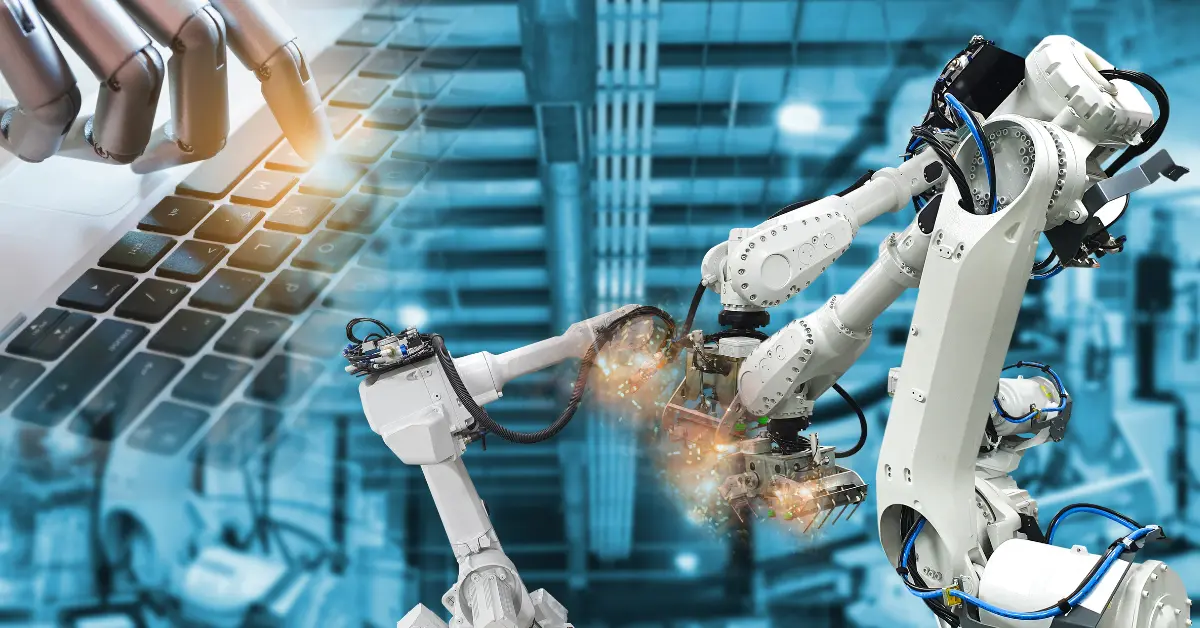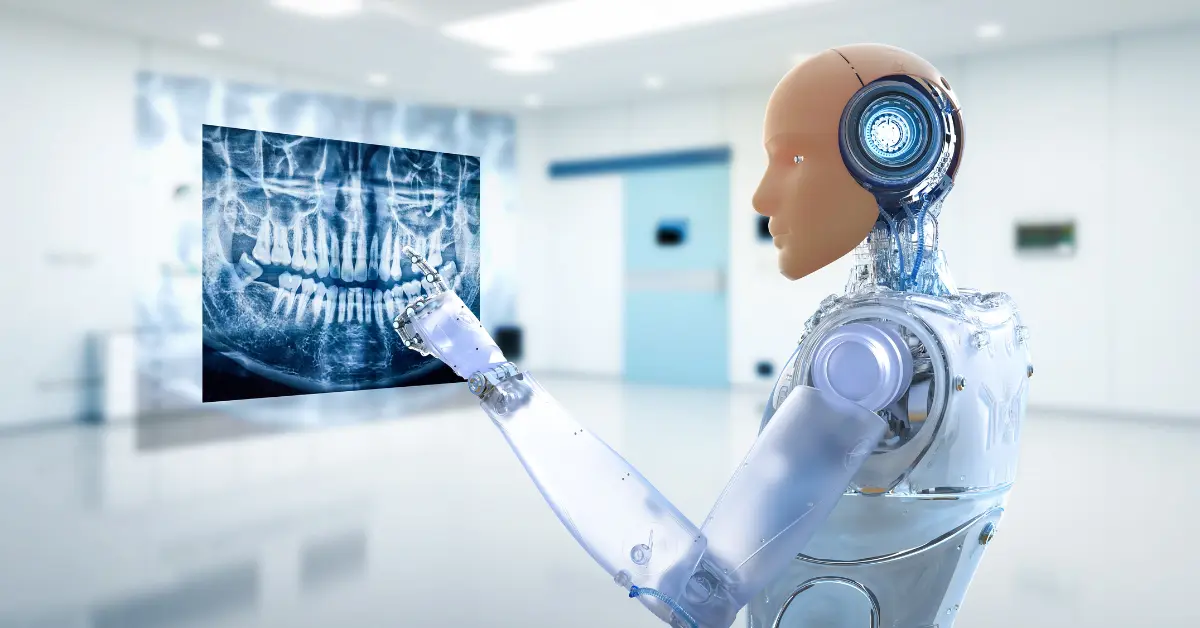Robotics is an interdisciplinary field combining computer science, engineering, and mathematics elements to design, develop, and operate robots. These robots are machines capable of performing tasks automatically, with minimal or no human intervention. The word “robot” comes from the Czech word “robot,” which means forced labour. Robotics is a rapidly advancing technology that has the potential to impact significantly many different industries, from manufacturing and healthcare to transportation and entertainment.
A Brief History of Robotics
The idea of creating machines that mimic human behaviour can be traced back to ancient times. For example, the ancient Greeks had myths of statues that came to life, such as the statue of Pygmalion brought to life by Aphrodite. However, the actual development of robotics as a field of study began in the 20th century with the introduction of mass production and automation in industries.
One of the earliest documented robots was the Unimate, a robotic arm George Devol and Joseph Engelberger developed in the 1950s. This arm could lift and stack hot pieces of metal in a General Motors plant, thus increasing productivity and reducing the risk of injuries for workers.
In the 1960s and 1970s, robotics research accelerated with the development of computer technology and the birth of
artificial intelligence (AI). This led to the creation of the first humanoid robot, called WABOT-1, by Waseda University in Japan. WABOT-1 was capable of simple movements, such as talking, walking, and manipulating objects. With the growing capabilities of robots, the field expanded into various sub-disciplines, such as industrial robotics, mobile robotics, and medical robotics.
Types of Robotics
Industrial Robotics
Industrial robotics is perhaps the most familiar and well-established type of robotics. These robots are used in manufacturing and other industrial processes to carry out repetitive and tedious tasks with high accuracy and speed. They are commonly found in factories and assembly lines, where they can perform welding, painting, and packaging tasks. The goal of industrial robotics is to increase efficiency and productivity while ensuring the safety of workers.

Mobile Robotics
Mobile robotics focuses on developing robots that can move around and interact with their environment. These robots can navigate and explore their surroundings using sensors and software. Examples of mobile robots include drones, self-driving cars, and rescue robots used in disaster zones. Mobile robotics is a rapidly advancing field with great potential in various applications, such as transportation, agriculture, and search-and-rescue missions.
Service Robotics
Service robots are designed to interact and assist humans in everyday tasks and activities. They are widely used in healthcare to aid surgeries, rehabilitation, and elderly care. Service robots are also used in households as vacuum cleaners, lawnmowers, and entertainment robots. They are equipped with advanced sensors, actuators, and AI capabilities to perform their tasks accurately and safely.
Medical Robotics
Medical robotics involves using robots in healthcare settings to assist medical professionals in surgeries, rehabilitation, and diagnosis. These robots can be autonomous or controlled by a surgeon and perform delicate surgeries requiring precision and accuracy, such as neurosurgery, eye surgery, and minimally invasive procedures. Medical robots can reduce the risk of human error and improve patient outcomes.

Applications of Robotics
Robotics has significantly contributed to various industries and has become an integral part of our daily lives. Some of the significant applications of robotics include:
Manufacturing
As mentioned earlier, industrial robots have been widely used in manufacturing to improve efficiency, accuracy, and safety. With the increasing demand for customized products, robotics has become even more essential in manufacturing.
Automotive Industry
The automotive industry has been one of the early adopters of robots. From the assembly of car parts to the painting and welding of the body, robots have been used extensively to perform various tasks in the production of automobiles. The use of robotics has increased efficiency and improved the quality of cars.
Healthcare
Robots have revolutionized the healthcare industry, particularly in surgeries. Doctors can perform complex procedures with greater precision and control with surgical robots, resulting in better patient outcomes. Robots are also used in healthcare facilities, such as rehabilitation, patient care, and drug delivery.
Aerospace and Defense
In the aerospace and defence industry, robots have been used to perform tasks that are too dangerous or impossible for humans. These tasks include bomb disposal, surveillance, and space exploration. With the advancement of robotics, we can expect more robots to be used in these industries.
Entertainment
It has found its way into the entertainment industry using robots in theme parks, movies, and gaming. These robots are designed and programmed to interact with humans and provide entertainment through their movements, speech, and expressions. As technology advances, we can expect the use of robots in entertainment to expand further.
The Future of Robotics
The future of robots is exciting and full of possibilities. As technology advances rapidly, we can expect robots to become even more integrated into our daily lives. Some of the future developments in its include:
Collaborative Robots
Collaborative robots, also known as cobots, are designed to work alongside humans, assisting them with tasks that require strength and precision. These robots have sensors and software that allow them to operate safely in the same workspace as humans. Cobots have the potential to significantly improve productivity in various industries, such as manufacturing, healthcare, and agriculture.
Soft Robotics
It is an emerging field that focuses on creating robots with soft, flexible bodies that can perform delicate tasks. These robots are made of polymers, gels, and elastomers, allowing them to adapt to different environments and interact with humans safely. It has great potential in applications such as healthcare, where robots need to handle delicate materials and interact with patients.
Uncrewed Aerial Vehicles (UAVs)
UAVs, also known as drones, have become increasingly popular in recent years. With the advancement of technology, drones can now perform a wide range of tasks, such as surveillance, delivery, and mapping. We expect to see more advanced UAVs that can operate autonomously, delivering goods and services without human intervention.
Smart Homes
The concept of a smart home, where every device is connected and can be controlled remotely, is becoming a reality thanks to it. With the use of service robots, smart homes can be more interactive and responsive to the needs of their occupants. These robots can perform tasks such as cleaning, home security, and personal assistance, making our lives more convenient and comfortable.
Conclusion
In conclusion, it is an exciting and rapidly advancing field with endless possibilities. From industrial healthcare applications, robotics has the potential to impact many industries and significantly improve our daily lives. As we continue to push the boundaries of technology, we can expect to see more advanced and intelligent robots that will change how we live and work. While there may be concerns and challenges associated with the development of robotics, it is crucial to approach it ethically and ensure that its benefits are harnessed for the betterment of society.
FAQs (Frequently Asked Questions)
Q: What is the difference between robotics and artificial intelligence?
A: Robotics is a field of study that involves designing, constructing, and operating robots. Artificial intelligence, on the other hand, is a branch of computer science that deals with creating intelligent machines that can think and learn like humans. While robotics incorporates elements of AI, the two are not the same. Robotics focuses more on the physical aspects of the robot, while AI deals with its intelligence and decision-making abilities.
Q: Can robots replace human workers?
A: Robotics and AI have the potential to automate many jobs currently performed by humans. However, it is unlikely that robots will completely replace human workers. Instead, they will work alongside humans, assisting them in tasks and freeing their time for more complex and creative work.
Q: Are robots safe to use?
A: The safety of robots depends on their design, programming, and use. Industrial robots, for example, are usually kept in cages or behind safety barriers to prevent accidents. Collaborative robots, on the other hand, are designed to work safely alongside humans, equipped with sensors to detect any human presence and avoid collisions.
Q: What are the ethical concerns surrounding robotics?
A: As with any emerging technology, robotics has
ethical concerns. These include the fear of job loss, the potential misuse of robots for harmful purposes, and the impact on society and human relationships. Ethical guidelines need to be established and followed in the development and use of robots.
Q: Will robots take over the world?
A: This is a common misconception fueled by science fiction movies. The reality is that robots are programmed and controlled by humans. As long as the technology is used responsibly and ethically, there is no reason to fear that robots will take over the world.




